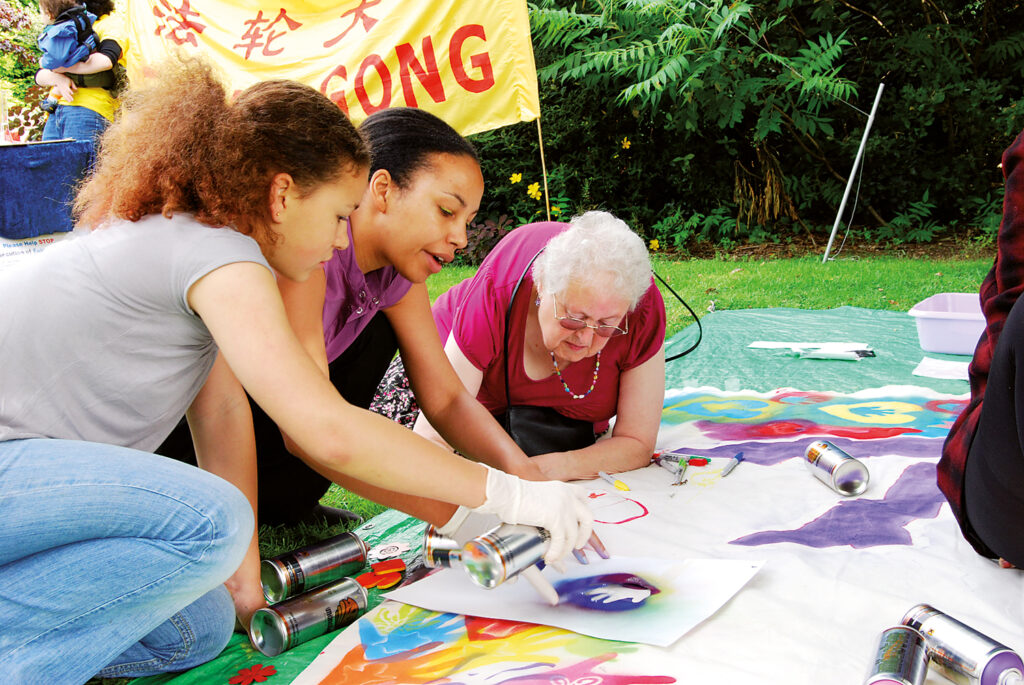Introduction
In the modern maelstrom of our hectic lives, the search for mental health is an essential endeavor. Managing the complex fabric of everyday life requires an awareness of the toll it takes on our mental well-being. It is in this context that the significant influence of therapeutic outlets is most noticeable. Creativity and the arts appear as a ray of light amid the chaos. This blog explores the fascinating space where creative pursuits become more than just hobbies—rather, they become effective means of mental renewal. Come explore the transforming power inherent in the motions of a paintbrush, the beat of a melody, and the dance of creative expression—a journey that provides healing to the complex aspects of life.
Understanding the Connection
For centuries, art has been a fundamental component of human communication. The act of creating has the special ability to transcend language and convey the depths of human emotion, as seen in the paintings found in ancient caves and modern digital art. The therapeutic benefits of participating in artistic endeavors have been recognized by mental health professionals on a growing basis in recent times. Different forms of creativity can reach the subconscious, enabling people to explore and communicate their feelings and thoughts nonverbally. These artistic endeavors—whether they involve writing, dance, painting, or drawing—can offer a secure setting for introspection and emotional release.

The Therapeutic Benefits of Art
- Communication and Self-Expression: Art provides a nonjudgmental platform for communication and self-expression. When words are inadequate, the sound of a song or a paintbrush’s strokes can express feelings that are difficult to express in words. A key component of the therapeutic process is this act of self-communication.
- Stress Reduction and Relaxation: Research has indicated that being creative can lead to both stress reduction and relaxation. People can experience a state of flow when they are completely engrossed in the present moment due to the immersive nature of art. This condition not only provides a brief reprieve but also promotes serenity and tranquility.
- Presence and Mindfulness: Making art promotes mindfulness, or the development of awareness in the here and now. The creative process helps people to stay grounded in the present and provides a break from worrying about the past or the future, whether they are concentrating on the intricacies of a painting or the beat of a dance.
- Empowerment and Self-Esteem: Regardless of size, completing a creative project can foster a sense of accomplishment and raise self-esteem. Making things helps people think positively, which gives them the confidence to face obstacles head-on and believe they are strong and capable.
- Catharsis and Emotional Release: Pent-up emotions can be released cathartically through artistic expression. People can process and externalize their emotions through the act of creating, which facilitates a healthier emotional release than repressing or avoiding difficult emotions.
Including the Arts in Daily Life
Now that we know the advantages of art therapy, let’s look at doable strategies for bringing creativity into our everyday lives to improve mental health:
- Create a Creative Routine: Set aside time for creative endeavors every day or every week. This could be as easy as journaling, drawing, or practicing an instrument. To experience the long-term advantages, consistency is essential.
- Try Different Media: Investigate a range of artistic media to find what speaks to you. Whether it’s writing, dancing, painting, or sculpture, the important thing is to find a medium that lets you express yourself honestly.
- Join Creative Communities: To meet people who share your interests, take part in online communities, writing clubs, or local art classes. Talking to others about your creative journey gives your therapeutic endeavors a social component in addition to a support system.
- Engage Mindfully: Approach creative endeavors with awareness. Instead of concentrating on the outcome, concentrate on the process and give yourself permission to completely inhabit the current moment without judgment or expectation.

Conclusion
In conclusion, it is impossible to overestimate the profound influence that creativity and the arts have on mental health. We can open a transformative path to holistic well-being by incorporating creative practices into our everyday lives. Artistic activities such as writing, dancing, and painting develop into more than just pastimes; they become healing instruments that uplift the soul, feed the mind, and foster a deep sense of self-connection. As we embrace the therapeutic potential of creativity, we set out on a path toward mental equilibrium and resilience. It is a call to put our mental health first amidst the challenges of daily life, creating an environment in which the expressive beauty of art serves as a beacon for a more introspective and peaceful mental state.
